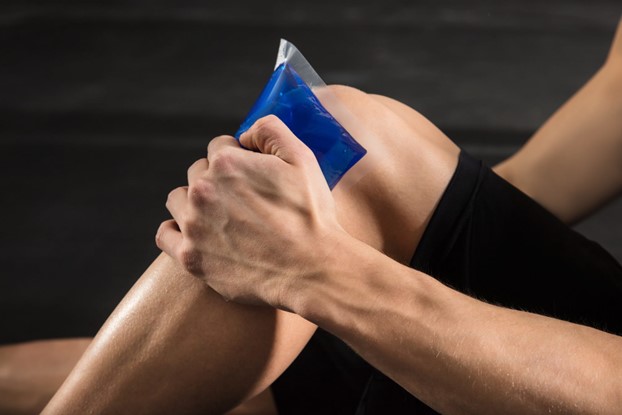A nurse is caring for a client following a total knee arthroplasty. The client reports a pain level of 6 on a pain scale of 0 to 10.
Which of the following interventions should the nurse take?
Place pillows under the client's knee.
Perform range-of-motion exercises on the client's knee.
Apply an ice pack to the client's knee.
Gently massage the area around the client's incision.
The Correct Answer is C

Applying an ice pack can help reduce pain and swelling after total knee arthroplasty.
Placing pillows under the client’s knee (choice A) is not recommended as it can hinder circulation and delay healing.
Performing range-of-motion exercises to the client’s knee (choice B) may be part of the rehabilitation process but should be done under the guidance of a physical therapist and may not be appropriate for immediate pain relief.
Gently massaging the area around the client’s incision (choice D) may not be appropriate as it can cause discomfort and disrupt the healing process.
Nursing Test Bank
Naxlex Comprehensive Predictor Exams
Related Questions
Correct Answer is C
Explanation
The statement “These crutches will make it possible to care for my child” indicates that the client is adapting to their role change by finding ways to continue fulfilling their responsibilities despite their injury.
Choice A is incorrect because it indicates that the client is concerned about not being able to fulfill their responsibilities.
Choice B is incorrect because it indicates that the client feels guilty about not being able to fulfill their responsibilities.
Choice D is incorrect because it indicates that the client is relying on someone else to fulfill their responsibilities.
Correct Answer is C
Explanation
A saw-tooth pattern with an atrial rate of 250 to 400/min is a characteristic finding on a cardiac rhythm strip of a client who has atrial flutter.
Choice A is incorrect because progressively longer PR durations are characteristic of a Mobitz type I second-degree AV block, not atrial flutter.
Choice B is incorrect because undetectable P waves are characteristic of atrial fibrillation, not atrial flutter.
Choice D is incorrect because absent PR intervals with a ventricular rate of 40 to 60/min are characteristic of third-degree AV block, not atrial flutter.
Whether you are a student looking to ace your exams or a practicing nurse seeking to enhance your expertise , our nursing education contents will empower you with the confidence and competence to make a difference in the lives of patients and become a respected leader in the healthcare field.
Visit Naxlex, invest in your future and unlock endless possibilities with our unparalleled nursing education contents today
Report Wrong Answer on the Current Question
Do you disagree with the answer? If yes, what is your expected answer? Explain.
Kindly be descriptive with the issue you are facing.
